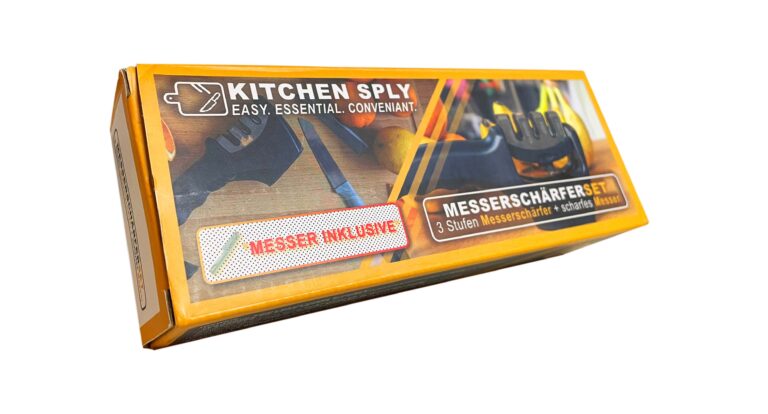BACKEND PRODUCTS

I had my own brand called BACKEND PRODUCTS, which sold one batch of knife sharpeners on Amazon.

Table of Contents
Watch this video to see the listing on AMZ
My Amazon FBA Journey: Selling a Private Label Knife Sharpener Bundle
Product Research and Selection
I ventured into Amazon FBA by selling my own private brand knife sharpener. The product selection process began with Helium 10, a market research tool that’s indispensable for Amazon sellers. It provided valuable market insights that led me to choose the knife sharpener as my initial product.
Sourcing and Manufacturing
I sourced my product directly from a manufacturer in China via Alibaba. The process involved:
- Ordering a sample via air freight
- Placing a bulk order of 500 units
- Total cost: approximately €1,200-1,300, including shipping and custom cardboard boxes
- Payment terms: 30% upfront, 70% upon production completion
Branding and Packaging Design
I created the brand “KITCHEN SPLY” for this product line, under my company name “BACKEND PRODUCTS”. The packaging design process was crucial:
- Received a template from the manufacturer
- Took product photos in my own kitchen with a friend’s help
- Edited images in Photoshop for both Amazon listing and box design
- Created a modern, easy-to-read box with a harmonious color scheme
Shipping and Amazon Compliance
The manufacturer shipped the order via train from China to Amazon’s warehouse in Dortmund. I couldn’t inspect the products before arrival due to:
- Time constraints from my apprenticeship and work at EUROPART
- Limited storage space in my apartment and basement
- The bulky nature of the shipment (3 huge, heavy boxes)
This decision led to an unexpected issue: Amazon issued a strike because the boxes violated their size and weight guidelines.
Quality Control and Supplier Relations
Upon receiving my own product, I discovered a discrepancy: the sharpening module’s text differed from the sample. I negotiated with the supplier and secured a €250 credit via PayPal. This experience highlighted the importance of thorough quality checks and maintaining good supplier relationships.
Marketing and Sales Strategy
My sales strategy involved several steps:
- Gathering initial reviews from friends who purchased the product
- Implementing Amazon pay-per-click (PPC) advertising
- Optimizing ad spend through extensive research
- Aiming for organic ranking to reduce ad dependency
I targeted about 20% of turnover for ad spend, but found this challenging to maintain in a competitive market.
Challenges and Market Realities
I faced several obstacles:
- Intense price competition, forcing me to lower prices from €12-13 to €8-9
- Diminishing margins due to high ad costs
- Realization that some competitors had slightly better products (e.g., offering replacement sharpening modules)
Financial Outcome and Inventory Management
As sales declined and ad budget depleted, I had to reassess my strategy:
- Recalled remaining 70 items from Amazon to my home
- Sold the remaining pieces to local a discount store called “Cody”
Overall, the profit margin was rather small (3-5%) but all products are sold and the project ended.
Key Learnings and Takeaways
This experience provided valuable insights:
- Gained practical knowledge about taxes, especially VAT and P&L statements
- Learned to navigate entrepreneurial and bureaucratic tasks (EORI, VAT registration, etc.)
- Recognized the complexity of small business management and problem-solving
- Understood the challenges of Amazon FBA beyond the “buy low, sell high” concept
- Realized the importance of substantial initial investment and a solid business framework for success
Conclusion
In conclusion, while I didn’t make significant profit, the project taught me that Amazon FBA is more challenging than often portrayed. Most categories are saturated, and finding a viable niche requires careful research and planning. The business demands more than just sourcing and selling; it requires a comprehensive understanding of marketing, logistics, and financial management.
